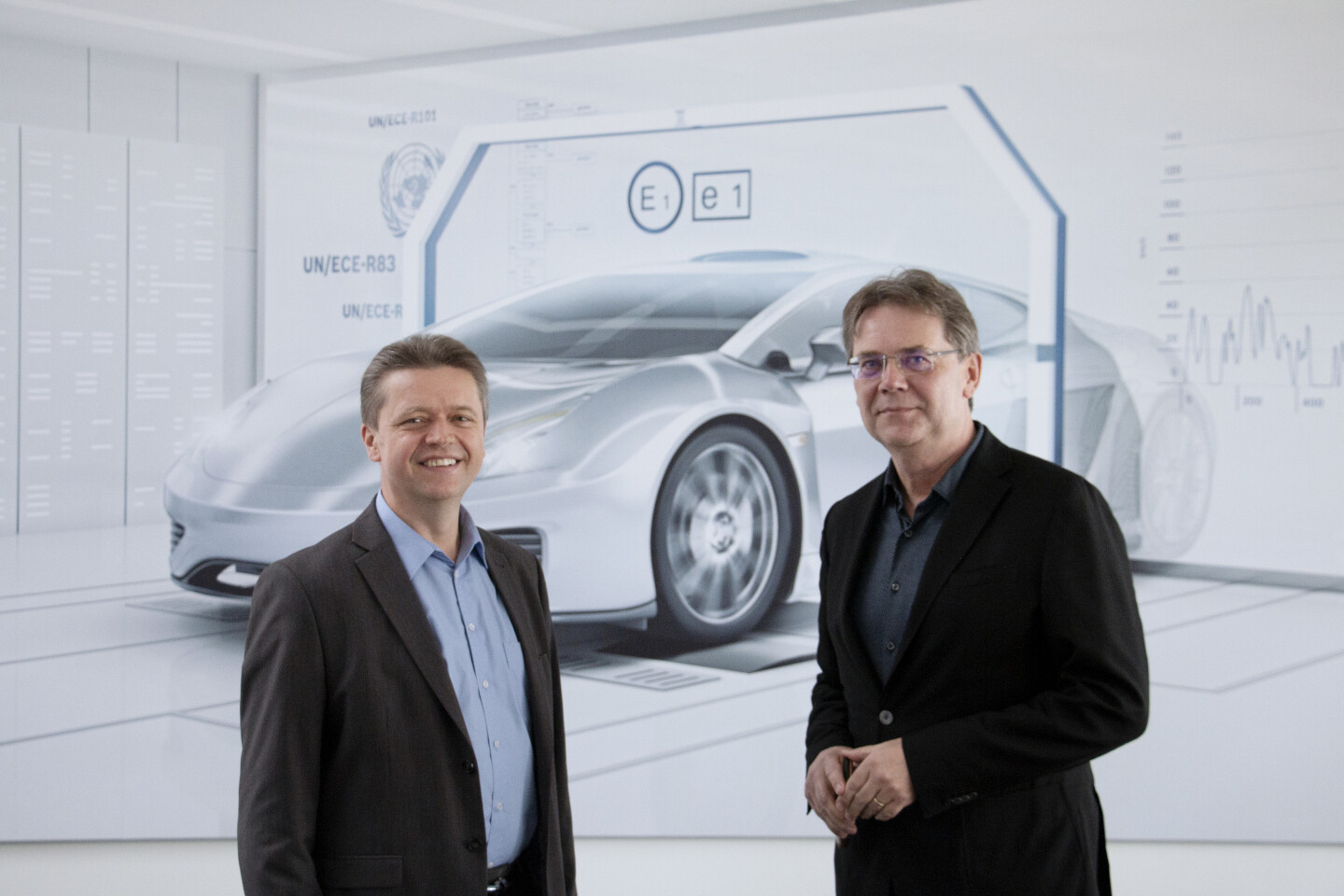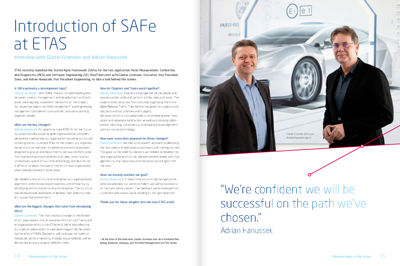Introduction of SAFe at ETAS
Interview with Günter Gromeier and Adrian Hanussek
ETAS recently launched the Scaled Agile Framework (SAFe) for the two application fields Measurement, Calibration, and Diagnostics (MCD) and Software Engineering (SE). RealTimes met with Günter Gromeier, Executive Vice President Sales, and Adrian Hanussek, Vice President Engineering, to take a look behind the scenes.

Is SAFe primarily a development topic?
Günter Gromeier: With SAFe, there is no fixed dividing line between product management and development and both areas were equally involved in the launch of this project. Our respective roles in portfolio management* and engineering management complement one another, and we’re working together closely.
What are the key changes?
Adrian Hanussek: Our goal is to make ETAS fit for the future by systematically applying agile organizational principles. We asked ourselves how our organization should be structured to best grow our business. Prior to this project, our organizational structure had been a traditional one with associates assigned to groups and departments. We saw conflicts arise from overlapping responsibilities and roles, which was an unnecessary waste of our time and energy. We also found it difficult to adapt the size of the Scrum team organization which already existed in some areas.We needed a new structure to strengthen our organizational alignment and improve responsiveness and efficiency by simplifying communication and synchronization. The structure should also enable associates to develop their skills in a modern, supportive environment.
What are the biggest changes that come from introducing SAFe?
Günter Gromeier: The most obvious change is the division of our organization into an operational structure (Trains) and an organizational structure (Chapters). We’re also adapting our style of collaboration to take advantage of all the potential benefits of SAFe. Decisions will no longer be made by individuals within a hierarchy. Instead, responsibilities will be distributed across a range of different roles.
How do Chapters and Trains work together?
Adrian Hanussek: Chapters bring together all the people who possess similar skills and perform similar roles and tasks. The projects draw resources from this pool, organizing them into Agile Release Trains. They define the goals for projects and solutions and set priorities and budgets. We hope this structure will enable us to achieve greater motivation and associate satisfaction as well as improving collaboration, planning, transparency, and organizational alignment with our corporate strategy.
How were associates prepared for these changes?
Günter Gromeier: We took a transparent approach to allocating the new roles and held various workshops and training courses. This gave us the solid foundations we needed to develop the new organizational structure. We also worked closely with management, human resources, and the works council right from the start.
Have we already reached our goal?
Adrian Hanussek: It takes time for such big changes to become established, but we’re confident we will be successful on the path we’ve chosen. The feedback we’ve received from customers also shows we’re heading in the right direction.
Thank you for these insights into the new ETAS world.
* At the time of the interview, Günter Gromeier was Vice President Marketing, Business Strategy, and Portfolio Management at ETAS GmbH.
-
 Introduction of SAFe at ETAS Download
Introduction of SAFe at ETAS Download